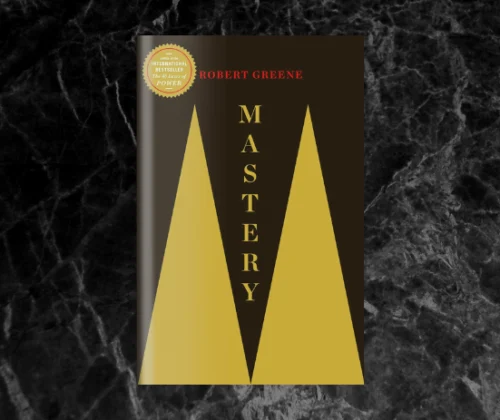“Delve into the depths of cognition with ‘Thinking, Fast and Slow’ by Daniel Kahneman, a Nobel Prize winner whose recent passing marks the end of an era. This book may not grip you with suspense in the traditional sense, but its revelations are nothing short of mind-expanding.” – Patrick, Co-Founder
‘Thinking, Fast and Slow’ is a groundbreaking exploration of the human mind’s intricate workings by Daniel Kahneman, a distinguished psychologist and economist. Through decades of research and insights garnered from his illustrious career, Kahneman elucidates the dual systems of thinking that govern our decisions and behaviors.
The crux of Kahneman’s thesis lies in the contrast between two modes of thought: System 1, the fast, intuitive, and often subconscious mode, and System 2, the slower, analytical, and deliberate mode. By dissecting these systems and their interplay, Kahneman unravels the cognitive biases and heuristics that shape our perceptions and judgments.
Here are ten profound insights gleaned from ‘Thinking, Fast and Slow’ that illuminate the labyrinthine corridors of the human mind:
- Dual Systems of Thought: Recognize the interplay between the automatic, instinctual responses of System 1 and the more deliberate, rational processes of System 2 in shaping our decisions.
- Cognitive Biases: Acknowledge the myriad biases, from confirmation bias to availability heuristic, that cloud our judgment and lead us astray in our reasoning.
- Prospect Theory: Embrace the paradigm-shifting concept that humans are not always rational actors, as traditional economic models presuppose, but are instead driven by the prospect of gains and losses.
- Endowment Effect: Understand how the mere ownership of an object can imbue it with disproportionate value, influencing our willingness to part with it.
- Framing Effects: Appreciate the power of framing in shaping our perceptions and preferences, as demonstrated by Kahneman’s seminal research on decision-making under risk.
- Loss Aversion: Confront the pervasive tendency to prioritize avoiding losses over securing gains, a phenomenon that profoundly impacts economic and personal decision-making.
- The Illusion of Validity: Grapple with the humbling realization that our confidence in our judgments often exceeds their accuracy, as we succumb to the illusion of validity.
- Overconfidence Bias: Guard against the perils of overconfidence, which can lead us to underestimate risks and overestimate our abilities, with potentially disastrous consequences.
- The Power of Priming: Explore the subtle yet potent influence of environmental cues, or primes, on our thoughts, feelings, and behaviors, as elucidated through Kahneman’s groundbreaking research.
- Integrative Thinking: Strive for integrative thinking, which harnesses the strengths of both System 1 and System 2, blending intuition with analysis to arrive at more informed and effective decisions.
For those who prefer videos, there is a good summary below by The Swedish Investor.
arvy’s takeaway: While ‘Thinking, Fast and Slow’ is not a traditional page-turner, its insights are profoundly illuminating, offering a roadmap to enhanced self-awareness and more reasoned decision-making. As we bid farewell to Daniel Kahneman, his legacy endures in the enduring wisdom of this seminal work, which continues to inspire and enlighten readers across the globe.
Thinking, Fast and Slow
English Version: Amazon.com
German Version: Amazon.com
Affiliate Link Disclaimer






